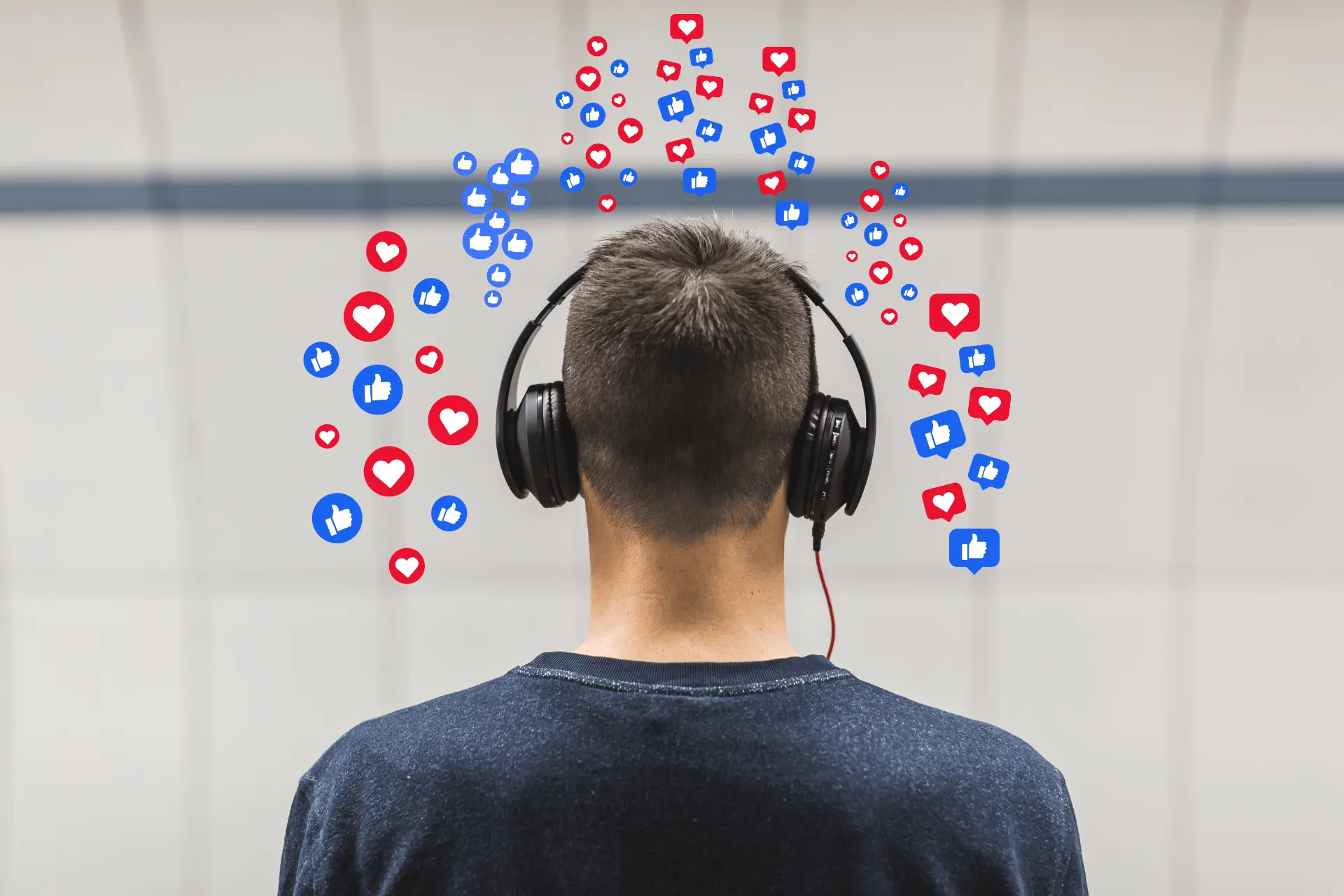Features
Why Sked?
More
Sked Social is a third party app and is not affiliated with or endorsed by any social network platforms.
See our Terms & Privacy Policy.
See our Terms & Privacy Policy.
© 2025 Sked Social. All rights reserved.

Managing a brand online? Then you’ve probably come across the buzzwords “social listening” and “social monitoring.” While they might sound similar, these two practices serve distinct purposes in a social media strategy. Plus, knowing the difference between the two can give you sharper audience insights and help you level up your social media game.
Let’s break it down: What exactly are social listening and social monitoring? What’s the difference? And how can they work together to supercharge your strategy?
Social monitoring is about tracking brand mentions, comments, and direct engagements. Think of it as keeping an eye on what’s happening in real time. When someone tags your brand, leaves a comment, or writes a review, social monitoring ensures you don’t miss it.
It’s a reactive strategy based on responding to specific actions your audience takes, including:
In essence, social monitoring ensures that your brand is present and responsive, which is crucial for maintaining trust and loyalty with your audience.
While monitoring is about immediate interactions, social listening takes a step back to look at the bigger picture. It’s a proactive approach that dives deeper into trends, sentiment, and the motivations behind your audience’s actions.
Social listening involves analyzing:
For example, instead of just responding to a tweet praising your product, social listening would identify whether there’s a growing trend of people mentioning a specific feature they love (or don’t!) These insights help inform long-term strategies—from improving products to refining marketing campaigns.
While they might sound similar, the differences between social monitoring and social listening come down to scope and purpose. Social monitoring is reactive, focusing on immediate interactions like mentions, tags, or direct messages. On the other hand, social listening is proactive and analyses trends and insights to anticipate future needs.
Here are some key differences between social monitoring and social listening:
Social monitoring is about being responsive. It’s ideal for real-time needs like managing a crisis or engaging with your audience.
Social listening, on the other hand, is proactive. It’s about understanding broader audience trends and using those insights to shape your strategy.
Monitoring focuses on metrics, such as the number of mentions, comments, and shares. It’s about tracking and quantifying your brand’s visibility.
Listening, however, uncovers insights. It’s not just about how many people are talking about your brand but what they’re saying, how they feel, and why they’re engaging.
Your new all-in-one workspace where brainstorms actually turn into content. Capture ideas when they hit, work with your team, fill the gaps in your calendar, and let AI handle the heavy lifting—from concept to publish. Get early access today.
Get Early Access!Social monitoring is your go-to approach for managing the here and now. It is beneficial for crisis management, where quickly addressing negative reviews or comments can protect your brand’s reputation. It also shines in customer service, enabling you to respond promptly to inquiries or complaints, and in engagement, where interacting with users who mention your brand helps build stronger relationships.
Social monitoring is excellent for:
Social listening allows you to step back and analyze the bigger picture. It’s invaluable when you want to dig deeper into audience sentiment, uncover recurring themes, or spot emerging trends. Understanding these nuances allows you to shape more effective long-term strategies, whether refining a campaign, improving your product, or identifying untapped opportunities.
Social listening is perfect for:
Social monitoring and social listening aren’t competing strategies—they’re complementary. Social monitoring ensures that no comment or mention slips through the cracks, while social listening helps you interpret these interactions within a larger context.
Together, they enable you to refine your strategy continuously, using insights from listening to inform monitoring efforts and vice versa.
Here’s how to integrate social monitoring and social listening for optimal results:
Using both methods, you can balance immediate responsiveness with long-term planning, creating a holistic approach to social media management.
Platforms like Sked Social can help streamline your efforts by tracking mentions and providing insights into audience sentiment.
Determine what you want to achieve with monitoring (e.g., faster response times) and listening (e.g., better campaign performance).
Make monitoring a daily habit and schedule regular reviews of listening insights.
Share insights from social listening with product, marketing, and customer support teams to ensure everyone is aligned.
Social listening and social monitoring are flip sides of the same coin, each playing a vital role in a well-rounded social media strategy. While monitoring keeps you grounded in the day-to-day, listening elevates your understanding of your audience and guides future decisions.
Ready to take your social media strategy to the next level? Download our ultimate guide to social listening today!
Want to see how Sked Social can help you streamline it all? Try it out today!